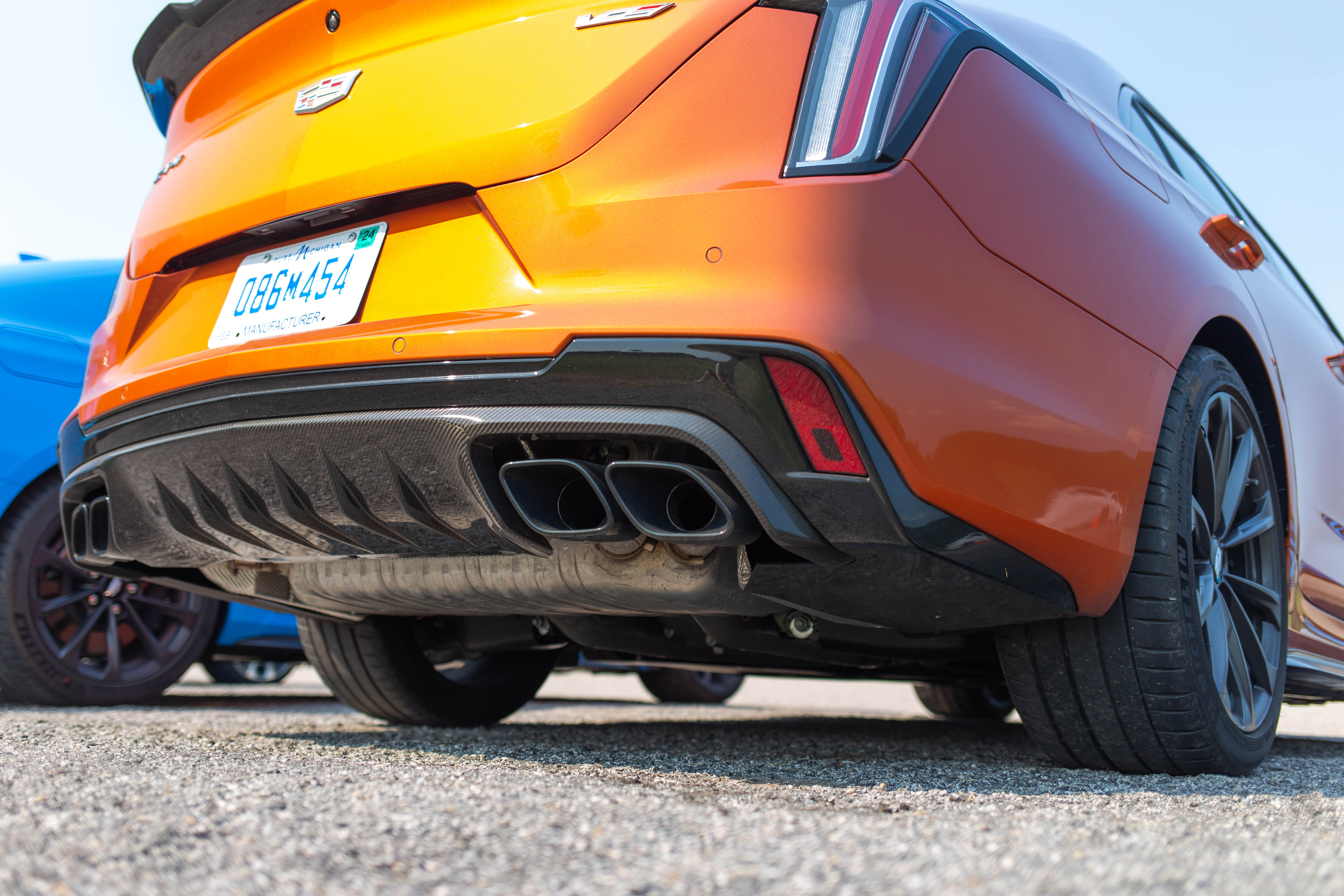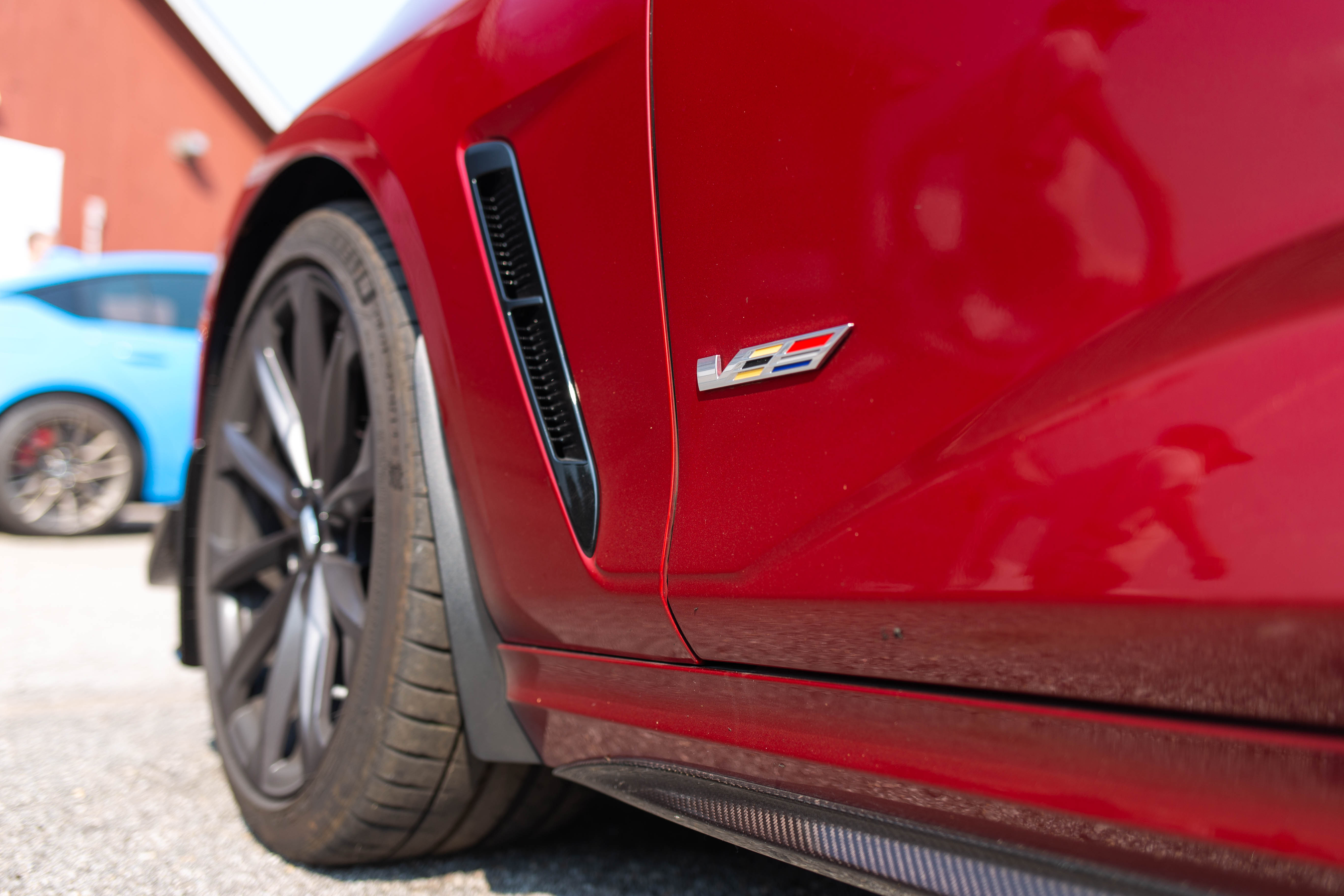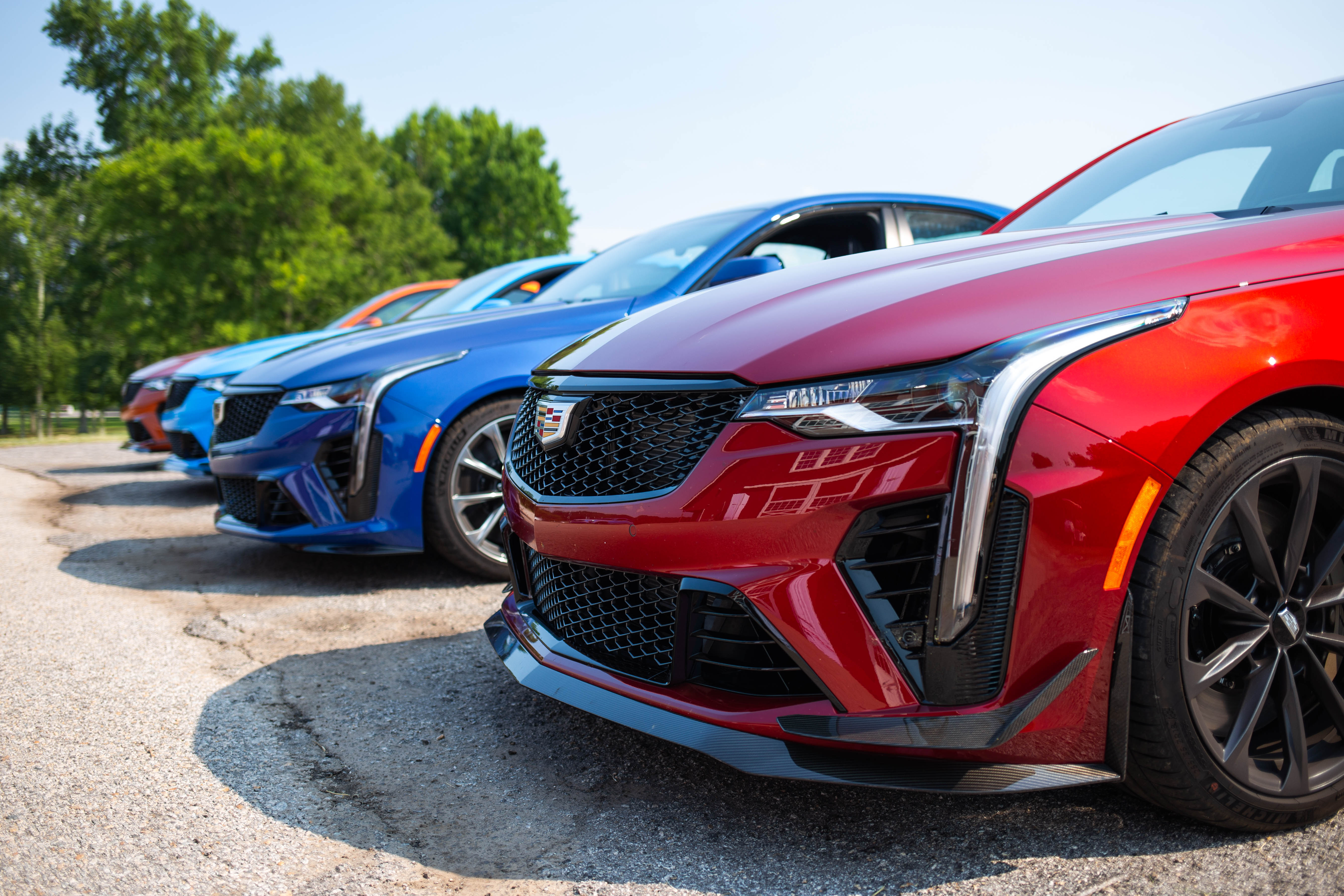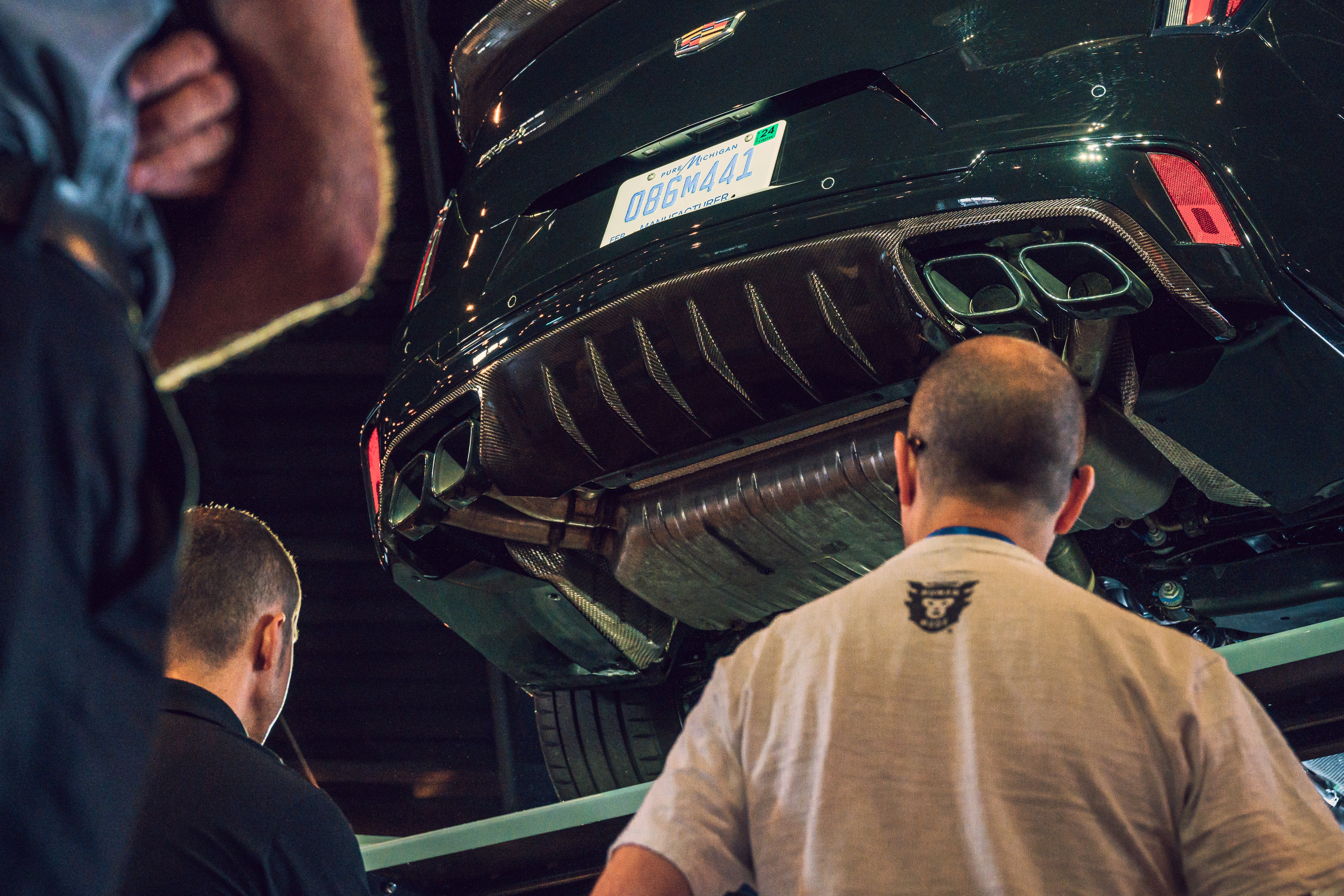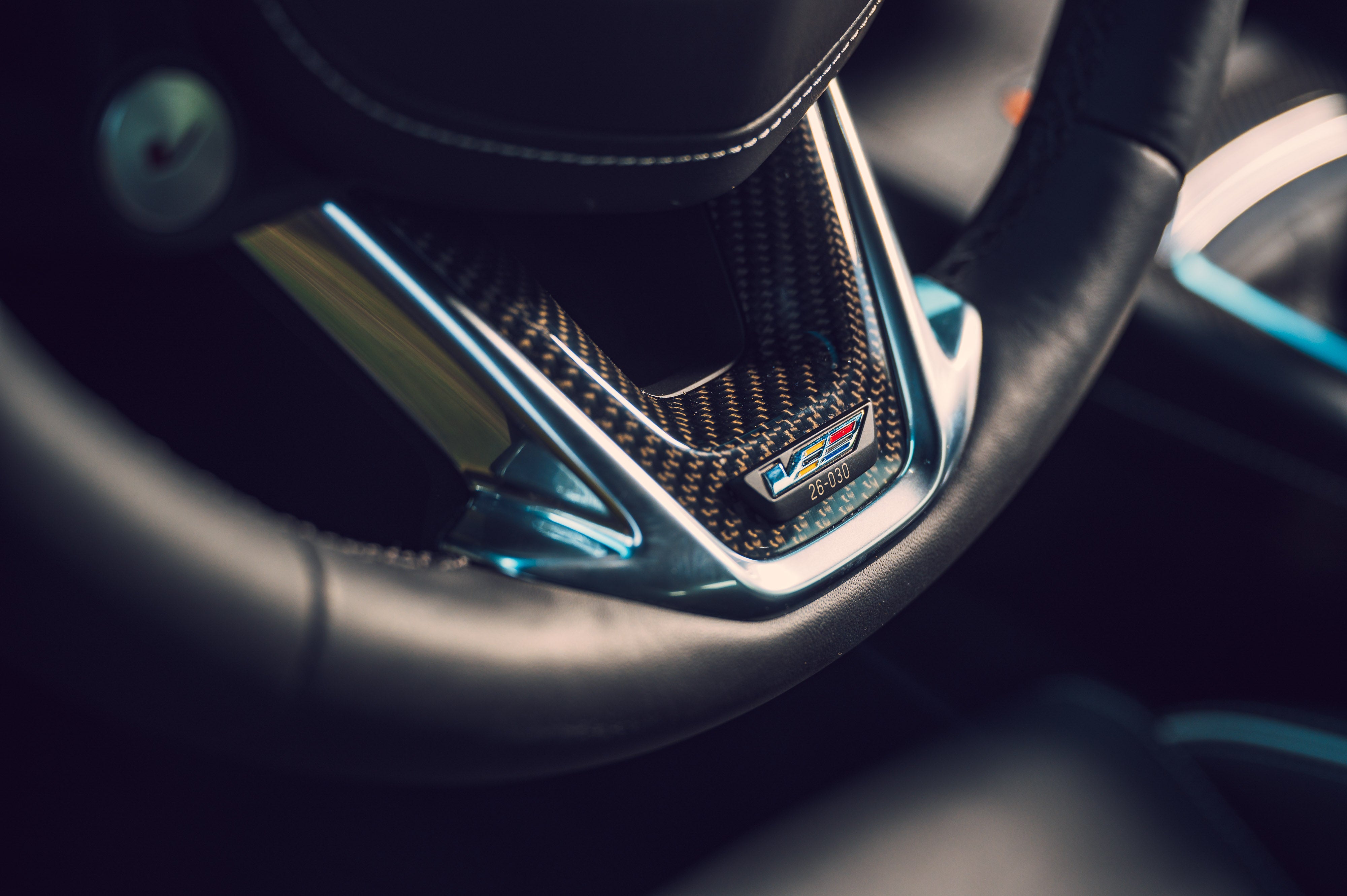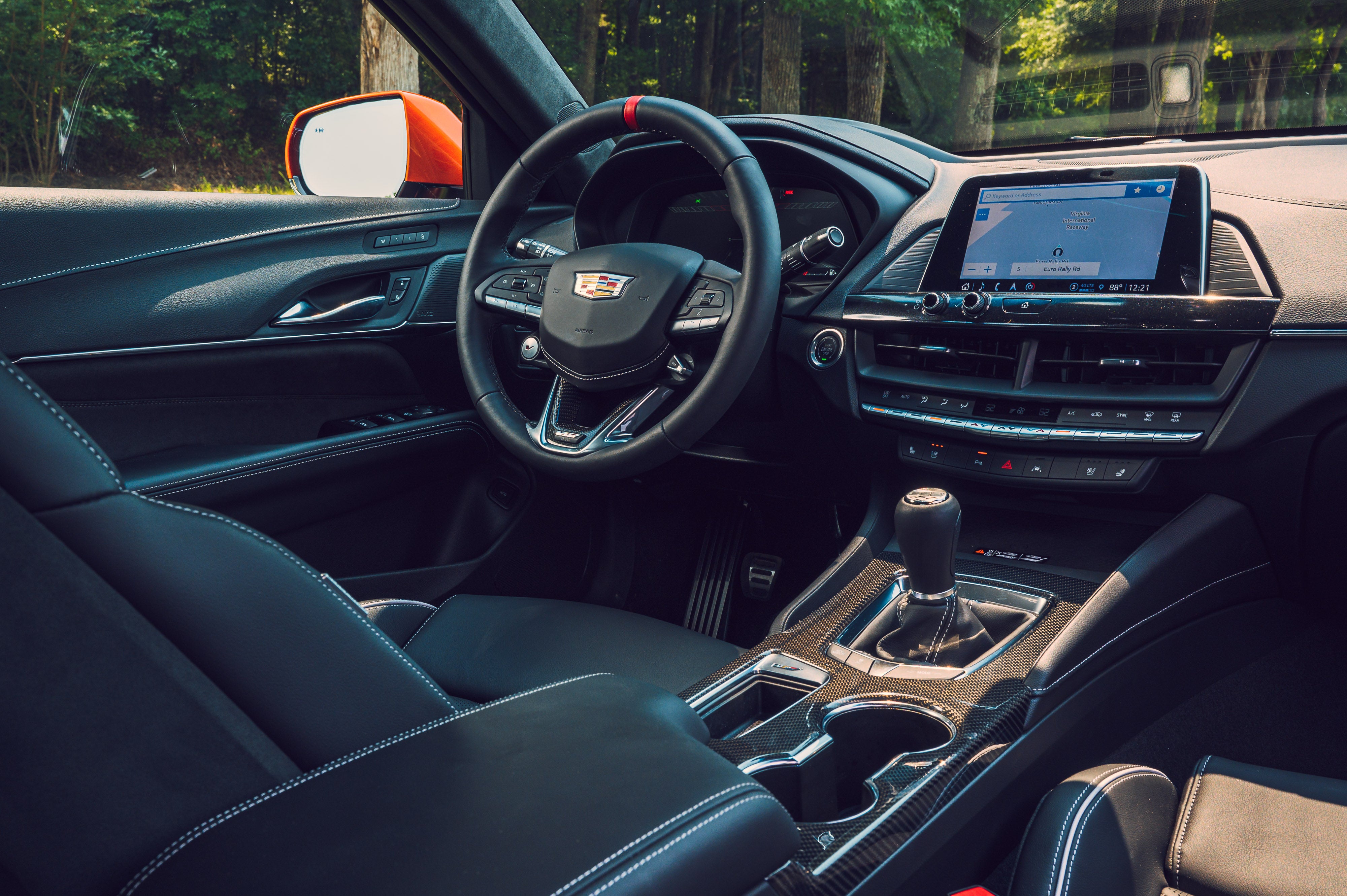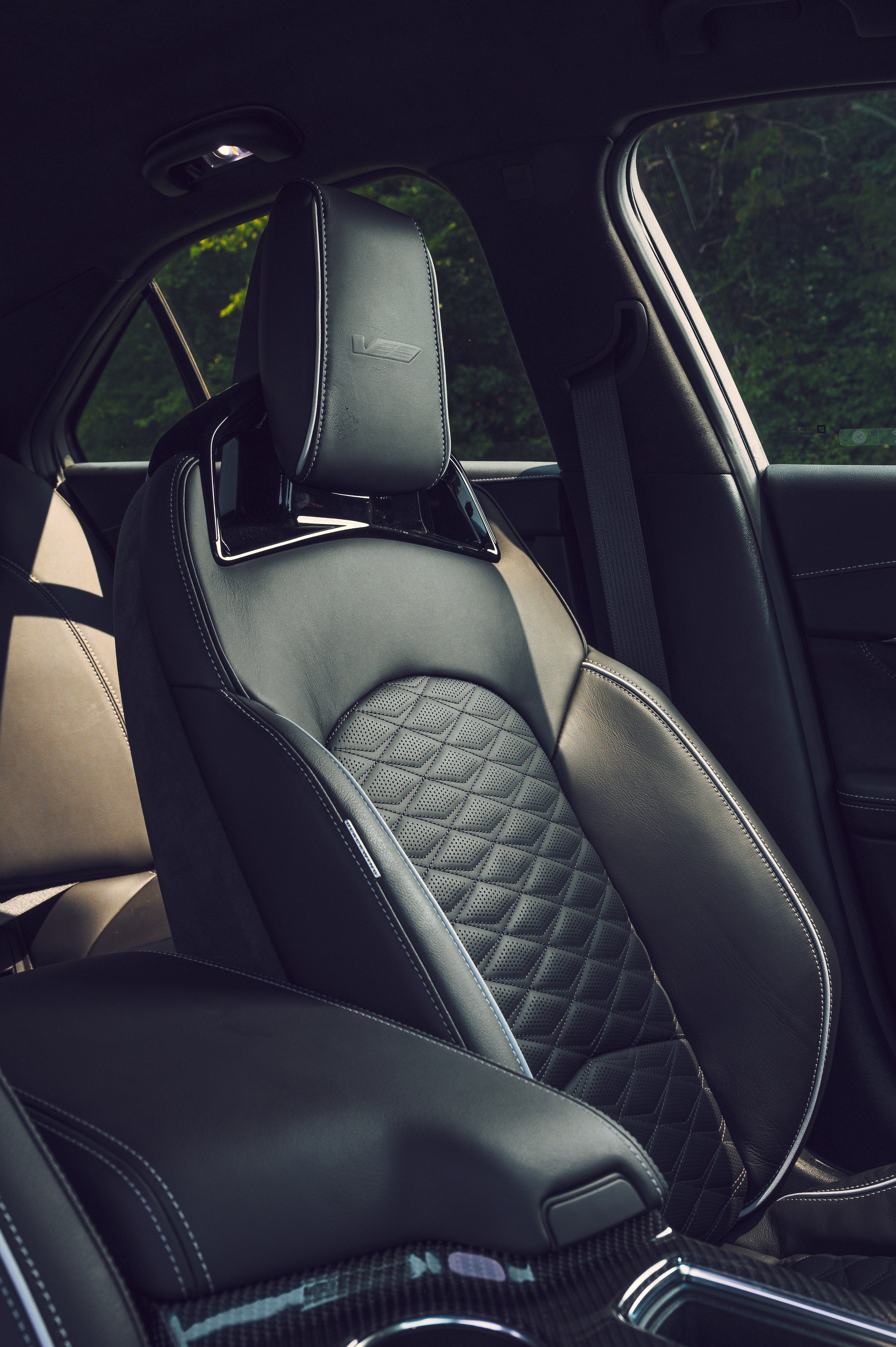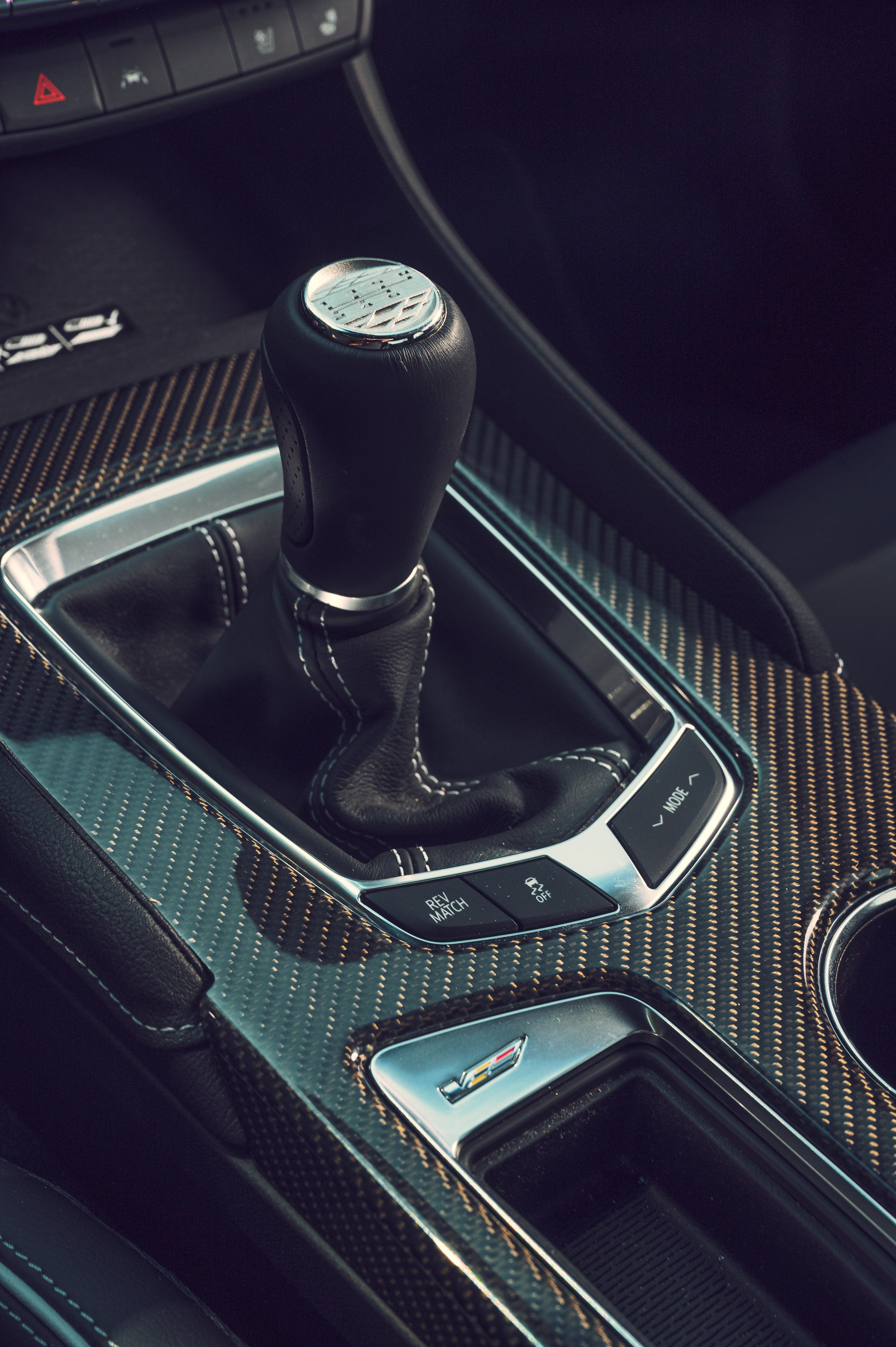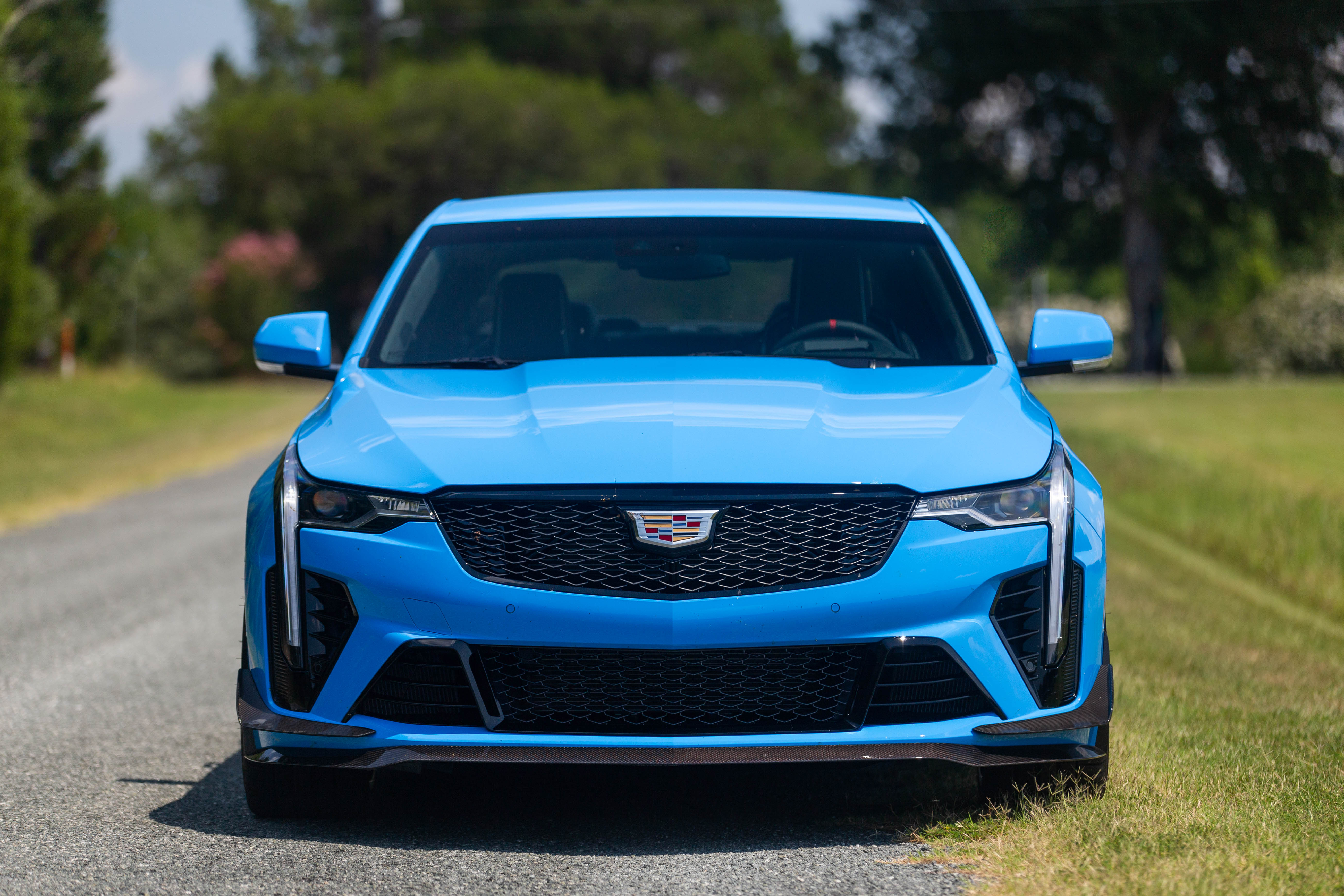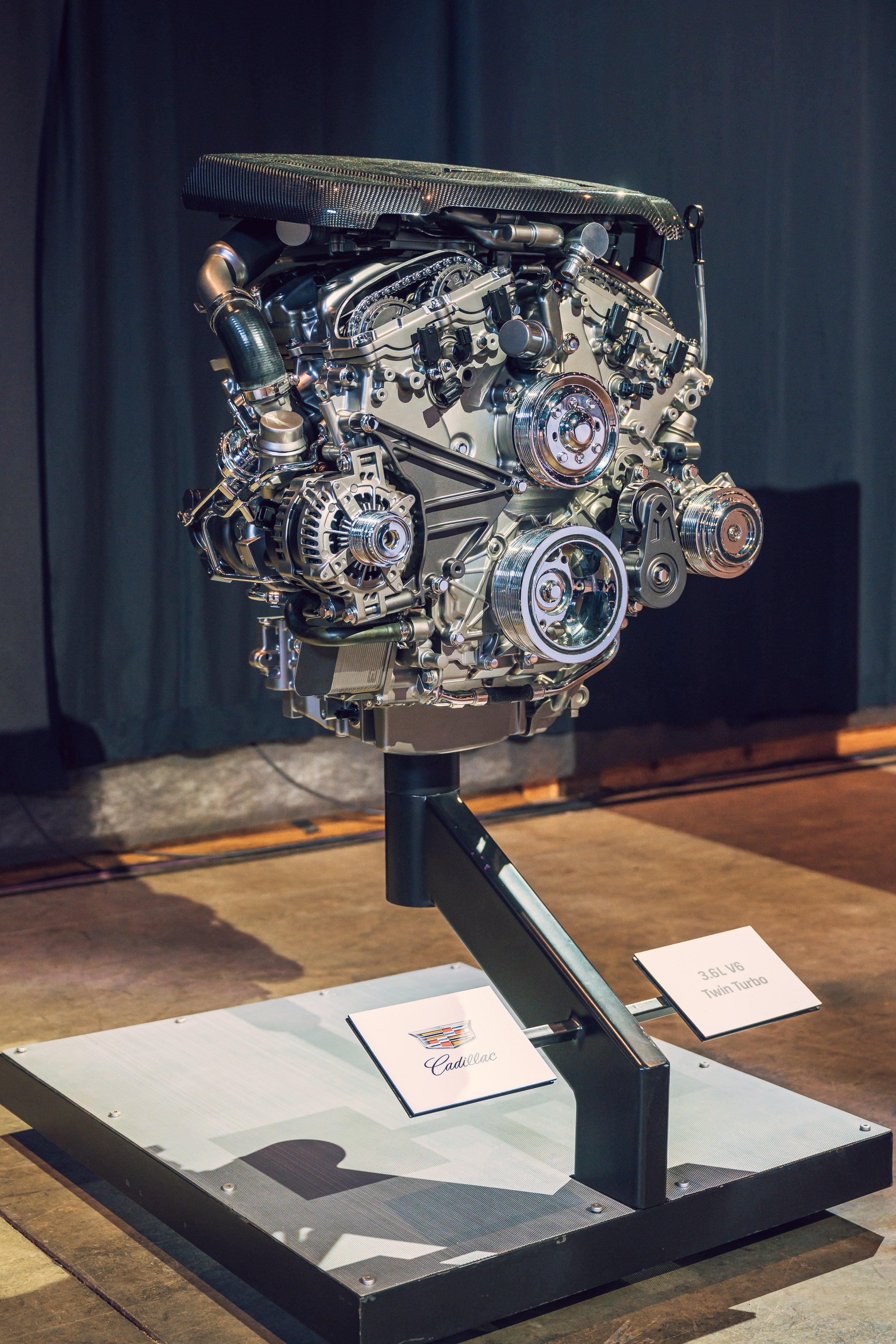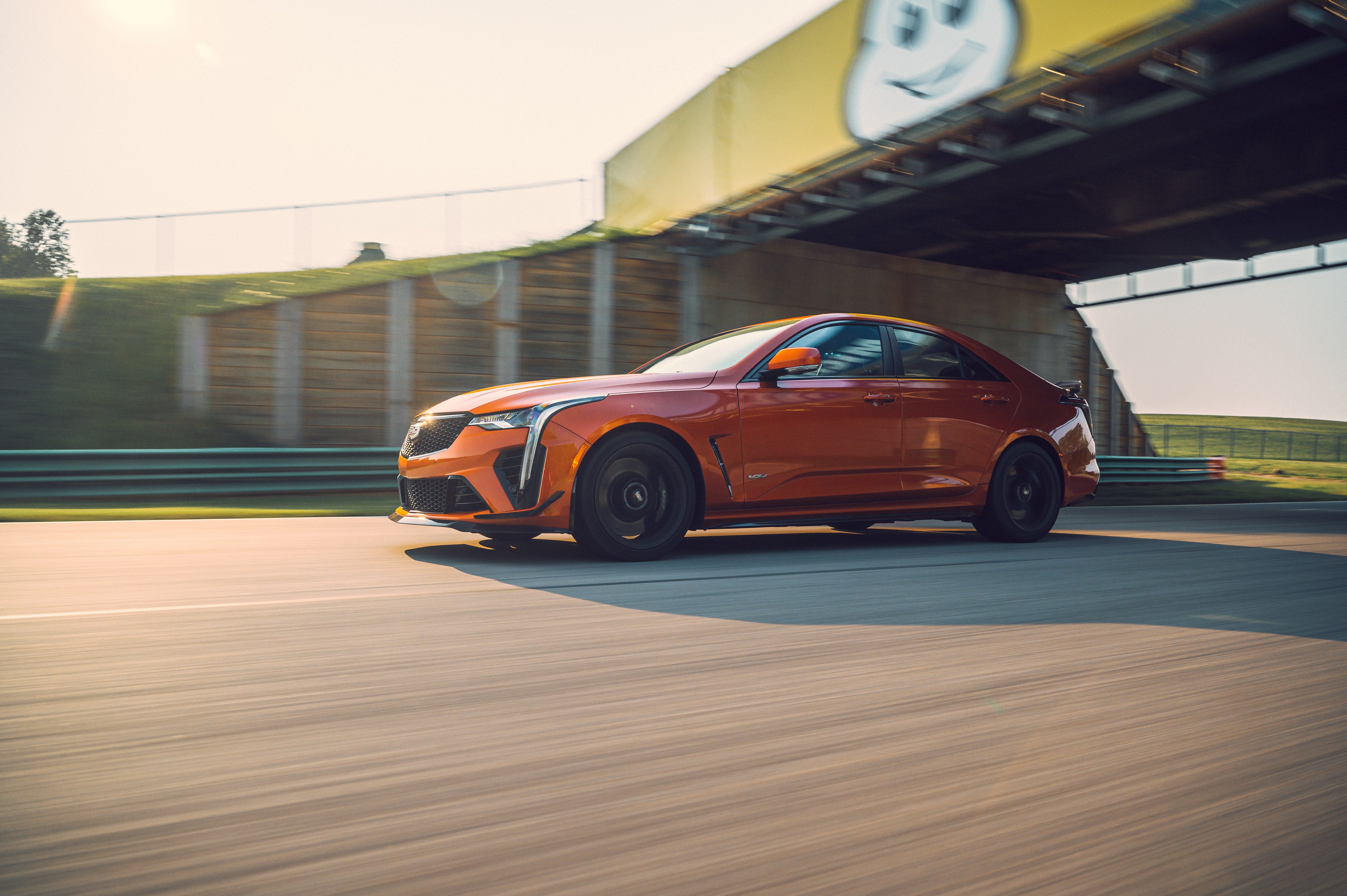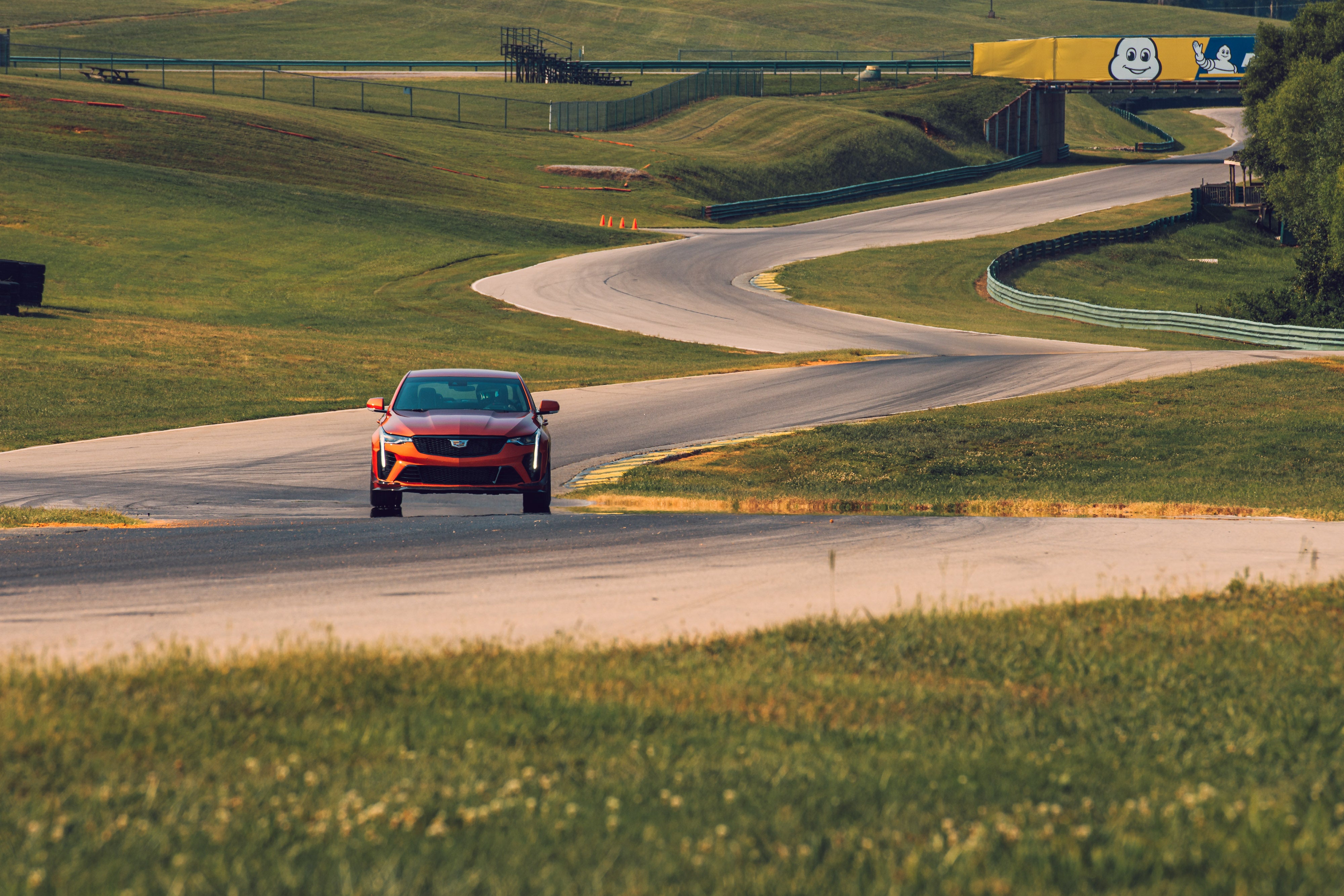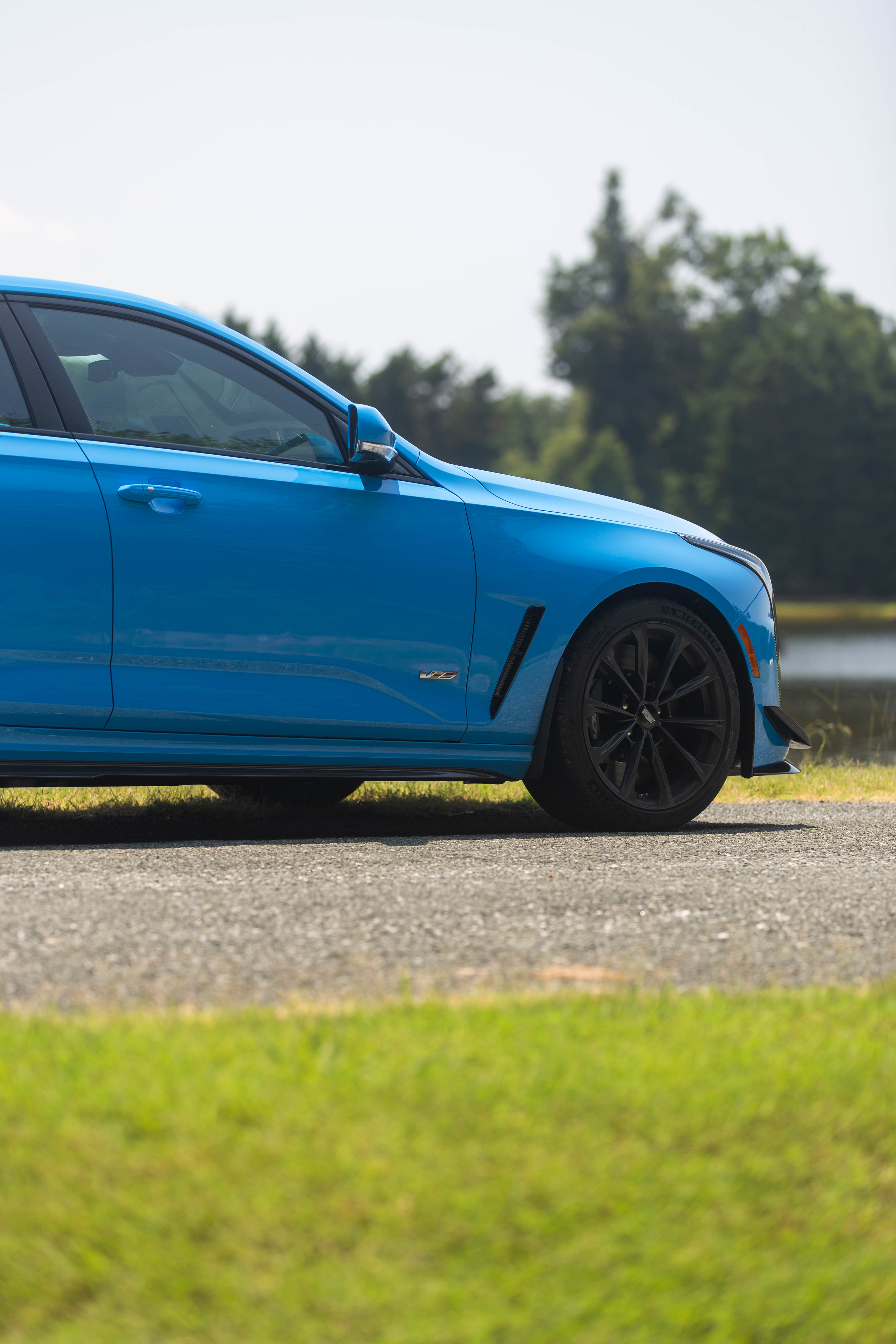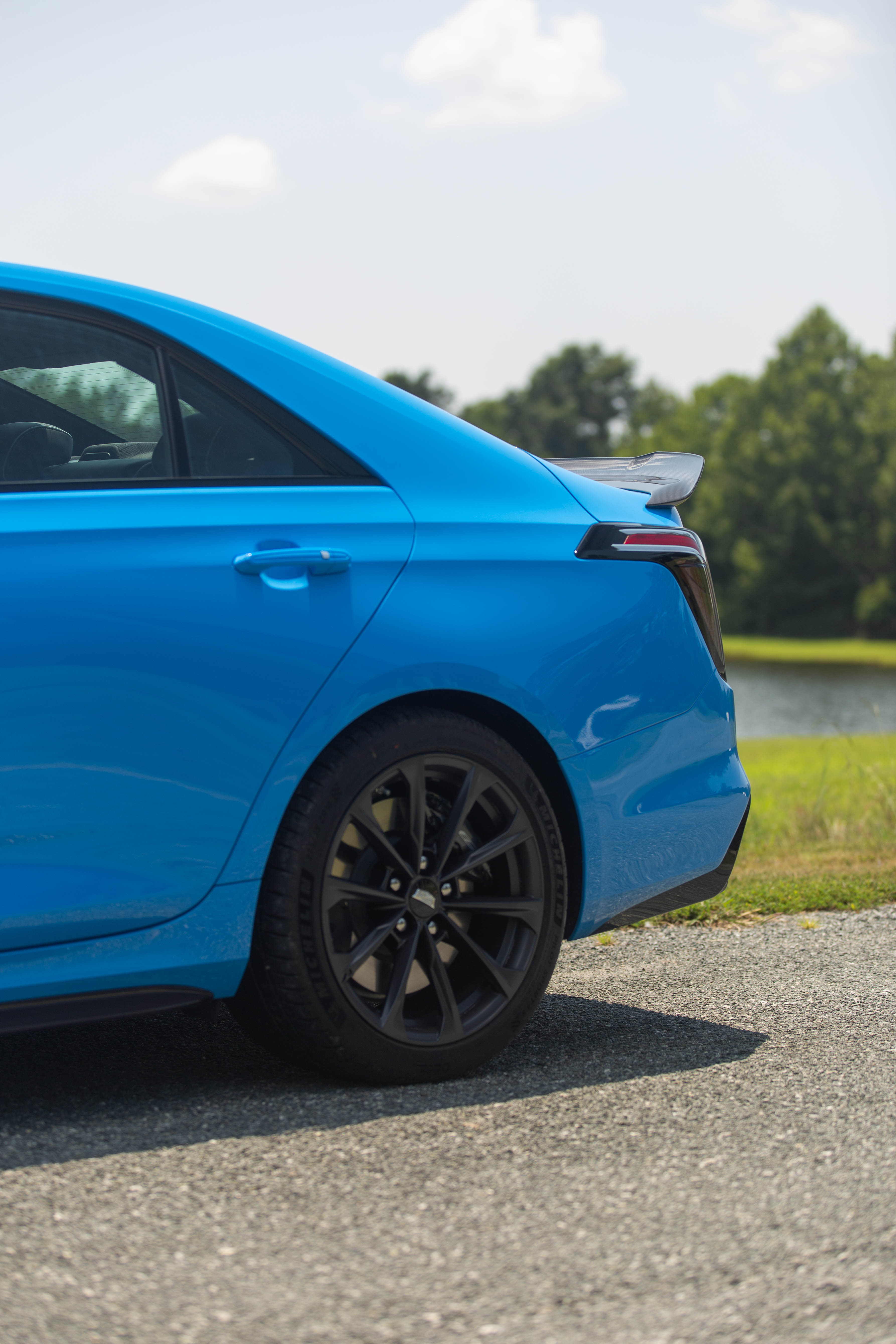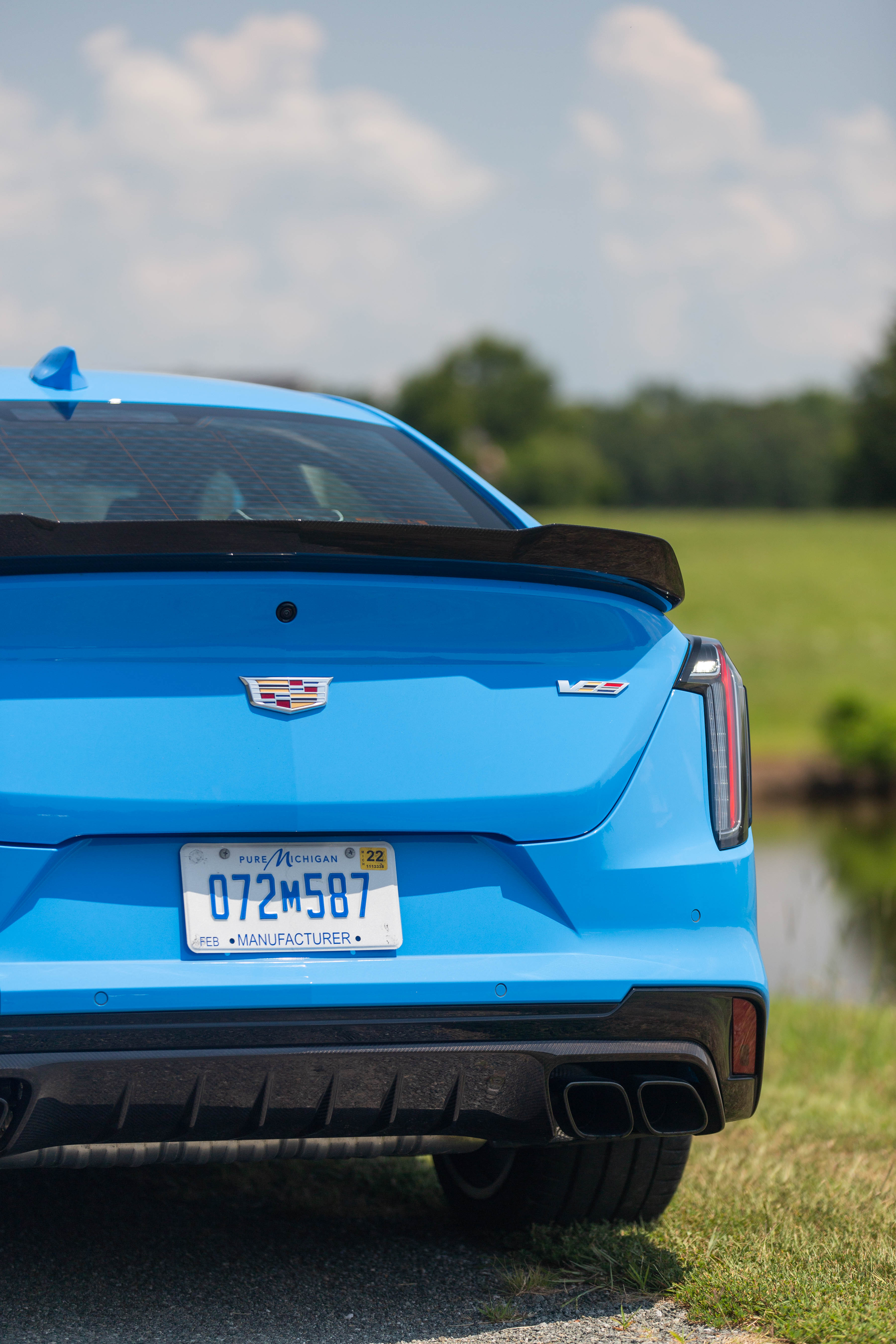Ever since the lovely Cadillac ATS-V departed in 2019, there's been an angularly shaped sport-sedan hole in the heart of the collective performance car market: We were missing something American. Something a bit brasher than your average Audi or AMG. But that's no longer the case: Enter the 2022 Cadillac CT4-V Blackwing, here with a new name and a new face but with very similar ATS-V stuff underneath. And it's good. Very good. Did you expect anything less?
Do not confuse the CT4-V Blackwing with the merely warmed-up CT4-V. The Blackwing moniker now stands for what just plain "V" used to: hotted-up and track-ready versions of Cadillac's regular sedans. The CT4-V with Blackwing treatment gets rear-wheel drive, an engine meant to be thrashed, and a six-speed manual transmission as standard equipment—the perfect three ingredients for a sport sedan.
2022 Cadillac CT4-V Blackwing: By the Numbers
- Base price (as tested): $59,990 ($76,040, manual; $78,985, automatic)
- Powertrain: 3.6-liter twin-turbo V6 | 6-speed manual or 10-speed automatic | rear-wheel drive
- Horsepower: 472 @ 5,750 rpm
- Torque: 445 lb-ft @ 3,500 to 5,000 rpm
- Curb weight: 3,860 pounds (manual) | 3,900 pounds (automatic)
- Seating capacity: 5
- 0-60: 3.9 seconds (est. automatic transmission)
- Top speed: 189 mph (est.)
- Cargo volume: 10.7 cubic feet
- EPA fuel economy: 16 mpg city/24 highway (automatic) | 15 mpg city/23 highway (manual)
- Quick take: An athletic American sports sedan that should make the European competition extremely nervous.
Rest assured that the new player absolutely picks up where the old one left off.
Get the Carbon Pack
First, a brief history lesson. "Blackwing" isn't just some name Cadillac pulled out of nowhere. It was what GM called the twin-turbocharged, "hot-vee," Cadillac-exclusive V8 engine the automaker stuck in the short-lived CT6-V before the car was canceled after one model year. Sad.
After that, the CT4-V Blackwing and CT5-V Blackwing models were announced—but the Blackwing V8 will not make an appearance in either car (apparently because it doesn't fit). Instead, the CT4-V Blackwing makes use of a V6 and the CT5-V Blackwing, which you'll read about next week, will pack the supercharged LT4 engine.
Built on an updated version of General Motors' Alpha platform, the CT4-V Blackwing sedan is the smaller and more athletic of the two Blackwing models. Its design language is pointier than ever, with slimmer headlights and taillights for 2022. The front facia incorporates an even more expansive black grille with brand-new meshwork, which you can pair with a couple of optional carbon fiber packages. I do recommend these, as they add the kind of aggression the CT4 has been missing.
The Carbon Fiber 1 Package ($4,350) includes front canards, a front splitter, underwing strakes, front-wheel deflectors, and a rear wing that leaps off the decklid like a summertime diving board. For an extra $2,650 (and a total of $7,000), the Carbon Fiber 2 Package offers everything in the first pack but also adds rocker extensions and a rear valance diffuser. They make the CT4-V Blackwing, itself already wide and aggressive, look demonic.
Like in the ATS-V, the CT4-V Blackwing uses a 3.6-liter, twin-turbocharged V6, now good for a claimed 472 horsepower. Improvements over the outgoing car's engine include low-inertia turbochargers, an improved air-intake restriction, revised controls software, and titanium connecting rods in the manual car. Yes, the CT4-V Blackwing does come standard with a Tremec six-speed manual. But if that isn't your poison, there's an optional 10-speed automatic available as well.
GM's fourth-gen magnetic ride control suspension system comes as standard here. You'll also find 18-inch forged aluminum wheels at all four corners, wrapped in specially developed Michelin Pilot Sport 4S tires—255/35ZR18 in the front and 275/35ZR18 in the back—from the factory. Front stopping power comes from six-piston Brembo brake calipers with 14.96-inch brake discs, while four-piston Brembos with 13.4-inch discs are relegated to the rear.
Inside, the CT4-V Blackwing has been modernized further with a 12-inch digital gauge cluster, an eight-inch center screen, and far less egregious piano-black trim. Overall, the layout is much cleaner and simpler and definitely a step up from the old ATS-V's interior. There are plenty of buttons and dials for the climate and radio controls and each are clearly labeled. The rear seats are pretty roomy, but I still had to duck while getting into them because the roofline dips, a problem I also experienced in the old ATS.
It's still not a Mercedes interior—or even a Genesis one at that, which feels incredibly damning to say about Cadillac—but it's no less chintzy than the current BMW M3's cabin and certainly ahead of anything Lexus currently makes, all of which seems close to eight years dated at this point. It leans functional over form and that's something I'm perfectly happy with in a performance car.
Pliant But Progressive
What made the ATS-V a critic's favorite was its ability to blend on-track performance and on-road sportiness. The new CT4-V Blackwing takes that idea and runs it a step further. There are added strut-tower braces and enhanced cooling. There's more power!
On the road and in its most comfortable setting, the CT4-V Blackwing's ride quality is relaxed but aware. You still feel the blacktop's small imperfections but it's more like gentle rumbling from movement over pavement than any real bumpiness. In the manual car, the clutch engages pretty low and took some getting used to, but I adored the shifter's short throws and intuitively spaced transmission gates.
The 10-speed automatic was smooth and barely perceptible in its shifts. Cruising in top gear, I could barely hear the engine spinning as it effortlessly kept us at highway speed. The steering remained pleasantly light and the brakes progressive. Good all-arounder, this thing was.
Gear down and pedal down, though, the hoarse burble of the V6 shoots through the cabin and you're rushed forward, riding a wave of torque. There's no doubt the CT4-V Blackwing can and will get you in trouble if you aren't careful—which is why taking it on a track is a great way of feeling out its limits. In a word, it's impressive.
There's no right or wrong choice between the six-speed manual and the 10-speed automatic. In Track mode, the auto figured out we were doing Fast Stuff almost immediately as soon as we left the pit lane and banged happily all the way up to redline. I tried shifting on my own at first, but I soon realized I didn't need to; the transmission handled things perfectly fine on its own. The brakes bit well, there wasn't so much power the car felt like it could run away from itself, and the steering was tight and acute.
But you merely need to sling around the first corner to understand how good a chassis and suspension system the CT4-V Blackwing rides on. Pliant but progressive, it doesn't feel like it'll bite you if you push it. Track behavior is very on/off in certain other sports- and supercars, where the limit is high but easy to surpass if you don't completely know what you're doing. And everything below that limit just makes the car feel bored with you.
This was not the case with the CT4-V Blackwing. Its engineers worked some flexibility into the chassis, which welcomes both experimentation and enjoyment for all levels of drivers. Even at the hands of a novice like myself, I felt as though the car was happy to keep pace with me and my comfort level, not the other way around. At no point did I even scratch the surface of its fullest capabilities, but also it didn't matter. The Blackwing was happy going the speeds I was going.
But the fact is there was more to explore, so I rode shotgun for few hot laps with Kevin Zelenka, a GM engineering group manager and "one of Cadillac's more accomplished track drivers," according to a company bio. Zelenka drives much better and faster than I do, but with him at the wheel, the CT4-V Blackwing's character became even clearer.
Mostly, it came down to its magnetic ride suspension. (Behind Super Cruise, I'm convinced this suspension system is the second-best thing GM currently makes.) It's a magical system that adjusts faster than a hummingbird can beat its wings and is a champion at keeping cars glued to the pavement even when shooting over rumble-stripped chicanes at 123 mph—bang! bang! bang! There were times I thought for sure hitting those bumps would bounce the car off its line, but it never happened. The suspension adjusted and we stayed planted and onto the next thing.
Take a look at a few of Zelenka's hot laps, courtesy of the car's performance data and video recorder.
You can feel the CT4-V Blackwing's weight when driving on track, but with those Michelin Pilot Sport 4Ses, this hardly matters. They'll help the car claw into and out of corners, working to put the engine's power down without sacrificing grip.
I wasn't crazy about how the V6 sounded at full chat—the noise didn't change much up the rev-range, it just got louder—but that was the only mar in an otherwise very good road car and great track car. Make no mistake: It is a road car that engineers massaged into a track car. But that's also who this car is for. It's not a dedicated track toy that's meant to sit in a garage from Monday through Friday. You can track this thing on the weekends and drive yourself to work during all the other days and be comfortable while doing it.
A Familiar Formula
Your standard CT4-V Blackwing comes with the magnetic ride suspension, the Brembo brakes, a manual transmission, 18-inch wheels, the eight-inch infotainment screen, 18-way adjustable seats, and a suite of driver assistance safety features such as forward-collision alert, front pedestrian braking, and front and rear park assist.
The test cars Cadillac loaned me included the 10-speed automatic ($2,275), both Carbon Fiber Packages ($7,000), and the performance data and video recorder ($1,600). Total MSRP for the manual and the automatic models shook out to $76,040 and $78,985, respectively.
The CT4-V Blackwing is undoubtedly an ATS-V successor—improved and modernized in every way—and carries with it everything that made the car it replaces so beloved. But it might very well inherit the same problem that plagued the ATS-Vs.
Just like before, Cadillac gave its entry-level sport-luxury sedan the hardware to make it one of the best-performing and most fun cars ever. But there's no denying that when a buyer wants a sporty luxury sedan, they'll tend toward BMW's M and Mercedes' AMG cars. What is Cadillac doing differently this time around to address this issue, besides making the car's name longer? I'm not sure.
Thankfully, there's still the mystical manual transmission option. It is neither as fast nor as efficient as the 10-speed automatic, but it's there if you want it. The ability to choose is a beautiful thing. Indeed, a Cadillac rep said of all the current Blackwing reservations people have placed, 60 percent of them were for a manual.
The CT4-V Blackwing can count the BMW M3 and the Mercedes-AMG C63 among its competitors, which at this point feels like a comparison as old as time. But while the German offerings have gotten more and more sophisticated but stern over time—not to mention grillier—the CT4-V Blackwing maintains the playfulness of the ATS-V. It doesn't feel like a car that takes itself very seriously, even though it can throw down at the track if you want it to. It also doesn't hurt that the Cadillac starts for about $10,000 cheaper.
So maybe that's it. Cadillac didn't change its overall formula, but the ecosystem in which the CT4-V Blackwing now finds itself has. The best thing Cadillac can do now is to keep putting down great cars. Maybe this, especially without all the excessive noise from brands and hashtags, will be Cadillac's big break. The rest is up to you guys.
Got a tip? Hit me up at [email protected].


